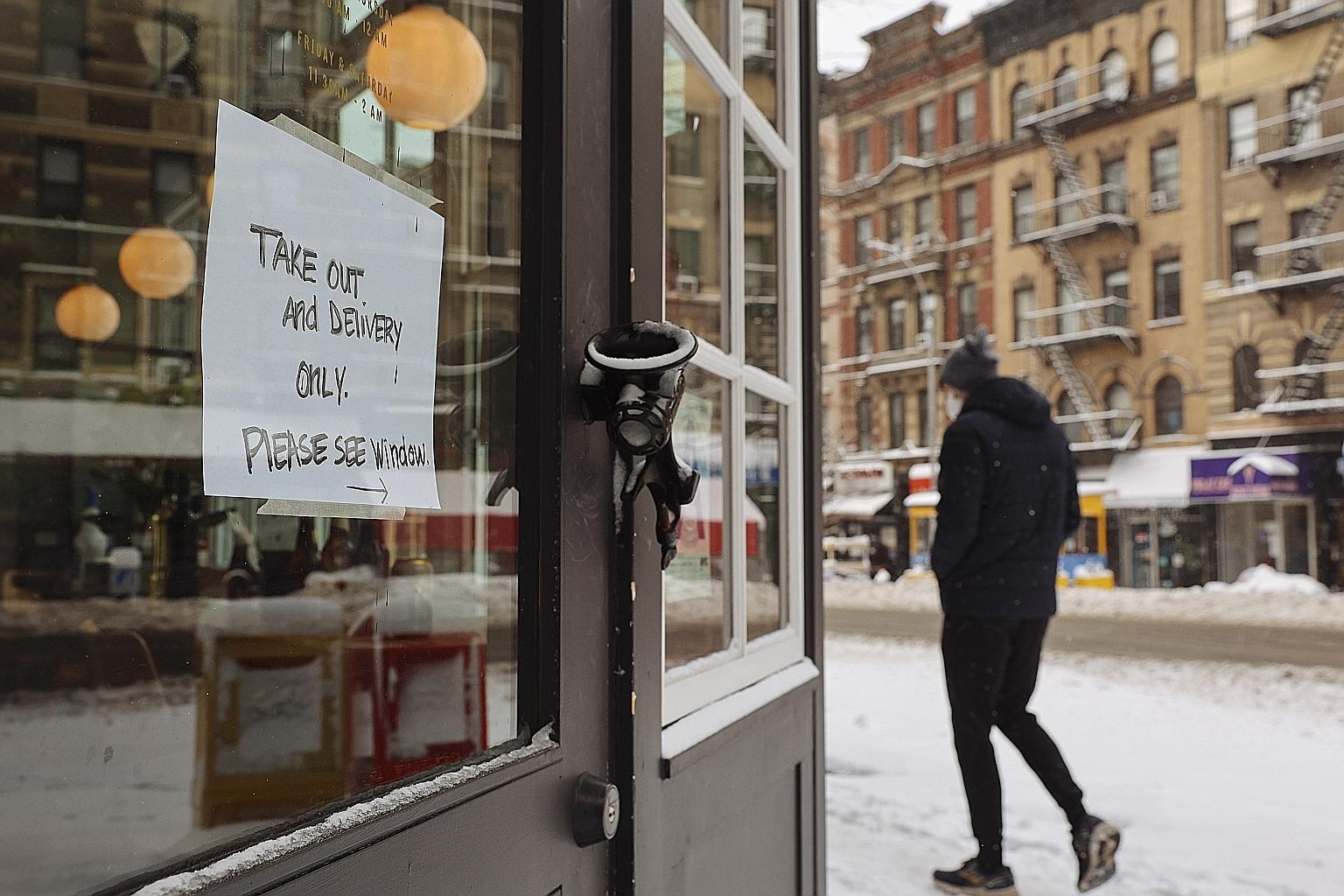US ghost kitchens thriving in pandemic
Hidden from public eye, they prepare dishes solely for delivery as such demand grows
Sign up now: Get ST's newsletters delivered to your inbox

A restaurant offering food only for take-out and delivery in the Hell's Kitchen neighbourhood in New York. Long restaurant closures, reduced dining capacity and a growing consumer preference for eating at home amid the coronavirus pandemic have boosted demand for food delivery.
PHOTO: BLOOMBERG
Follow topic:
NEW YORK • You cannot eat there or collect your meal.
But so-called ghost kitchens, which prepare food only for delivery, are booming in the United States amid the pandemic.
Do not look for a Firebelly Wings or a Monster Mac restaurant anywhere in America because you will not find their signs on any street.
Instead, their chicken wings or macaroni and cheese are found via smartphones. The new brands, like dozens of others, were invented solely for delivery.
Their dishes are prepared in "ghost" kitchens, hidden commercial spaces closed to the public.
The trend, sometimes called "dark" kitchens, has been around for a couple of years but is enjoying a huge boost due to coronavirus shutdowns.
"Consumer behaviour has been altered by Covid-19," said a spokesman for Nextbite, an operator of ghost kitchens.
"Consumers who had never ordered from delivery platforms have adopted the convenience."
Restaurants closed for months, others open with reduced capacity, customers preferring to eat at home for fear of infection - everything has been pointing towards increased demand for delivery.
DoorDash, the leading food delivery platform in the US with 47 per cent market share, handled 543 million orders between January and September, a threefold increase over last year.
"It's capitalising a lot on the restaurants that have closed. But at the same time, there's new demand created too," said Mr R.J. Hottovy, director of financial analytics at global restaurant consultancy firm Aaron Allen & Associates.
-
US$75k
Estimated investment needed to open a so-called ghost kitchen.
US$350k
Estimated minimum investment needed to open a bricks-and-mortar restaurant.
Zuul, C3, Kitchen United and CloudKitchens, which is headed by Uber co-founder Travis Kalanick, offer restaurateurs kitchens - sometimes fully equipped - along with technical support to manage orders and advice on developing their brands.
Nextbite focuses on the latter, helping restaurants develop new menus in their existing kitchens.
Traditional caterers are getting in on the act, opening ghost kitchens under their own names and inventing new culinary offerings.
"Everyone is trying to address the downward pressure on your margins," said Zuul chief operating officer Kristen Barnett, who manages a facility in New York that houses nine different ghost kitchens.
Mr Michael Roper, chief executive of healthy fast-food chain Muscle Maker Grill, says a dark kitchen can be opened with a US$75,000 (S$100,000) investment. A classic bricks-and-mortar restaurant would cost "between US$350,000 and US$500,000", he said.
With a rental kitchen, "I can switch to a salad concept, to a burger concept. I can make those changes pretty rapidly and all the cost to me at that stage is some artwork and maybe securing the name", he said.
Zuul also offers its own ordering platform to help restaurants further improve margins.
It is intended to replace deliverers like DoorDash or Uber Eats that can take up to 30 per cent of the cost of the order.
Ghost kitchens operate without the waiters and managers needed to run traditional restaurants.
Mr Hottovy notes that the restaurant sector has been moving towards a "much more productive model" in recent years.
"It probably means less jobs down the road," he said.
The Restaurant Opportunities Centres United recently warned of increased job insecurity at ghost kitchens compared with more traditional outlets.
For some in the restaurant industry, the model made it possible for them to survive the Covid-19 crisis.
Mr Roper does not think customers will stop ordering in or slow down when the virus is under control and restaurants are free to serve as they did before.
"Once they learn how easy it is, the food comes on time, it's hot, it's good, just the convenience, they're going to keep doing it," he said.
"The whole industry has kind of changed."
AGENCE FRANCE-PRESSE

